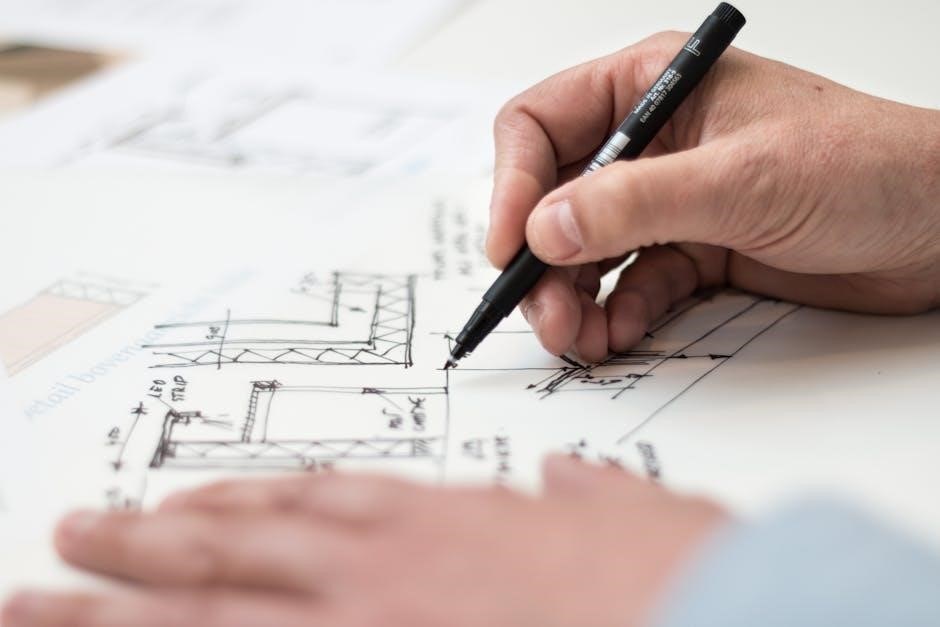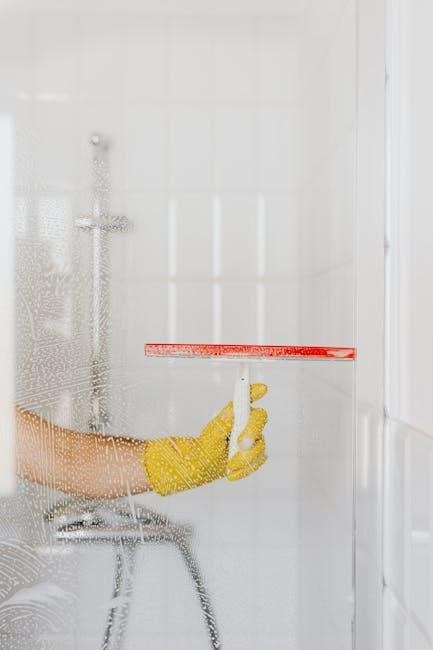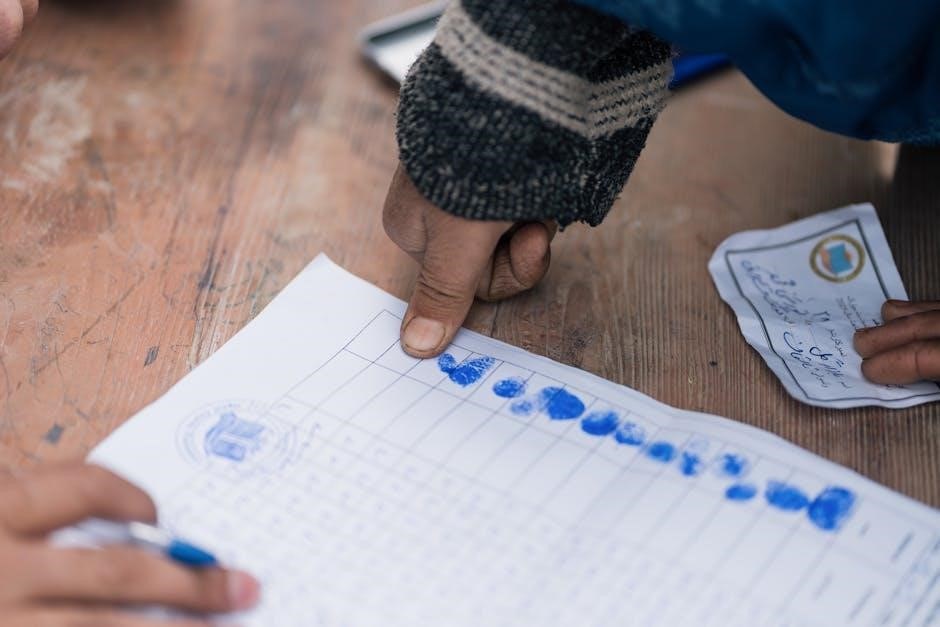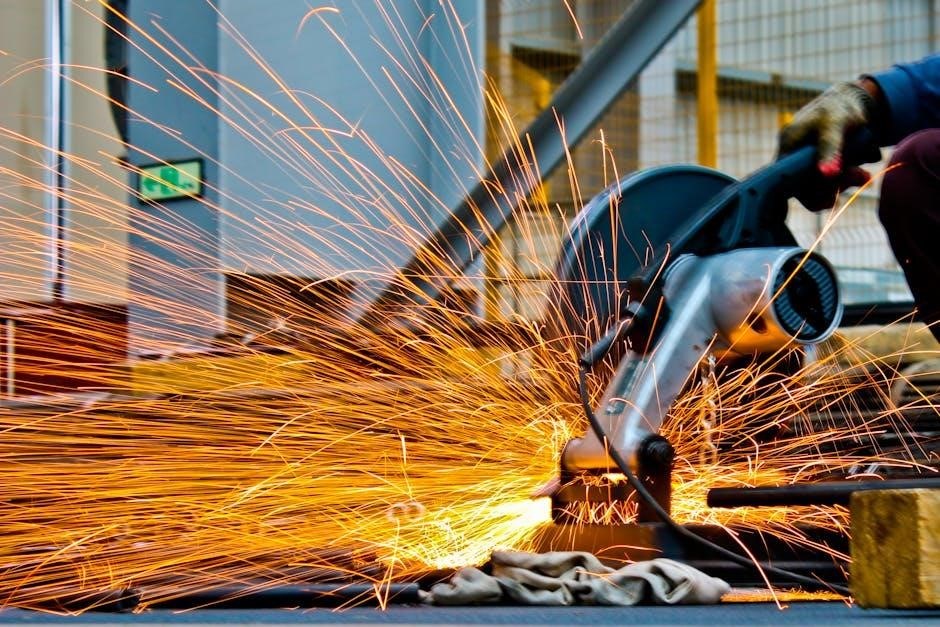Manual Lymph Drainage (MLD) certification introduces Dr․ Emil Vodder’s techniques, enhancing lymph formation and promoting drainage in superficial and deep systems․ It’s crucial for lymphedema management, post-surgery recovery, aesthetics, and sports, offering significant therapeutic benefits through specialized training․
1․1 What is Manual Lymph Drainage (MLD)?
Manual Lymph Drainage (MLD) is a gentle, non-invasive therapeutic technique developed by Dr․ Emil Vodder․ It involves specific manual manipulations that stimulate the lymph nodes to enhance the natural drainage of lymph fluid through the lymphatic system․ This process helps reduce swelling, particularly in cases of lymphedema, which can result from medical conditions like cancer, surgery, or trauma․ MLD is recognized as a primary treatment for lymphedema and is often performed by certified lymphedema therapists (CLTs) in clinical or outpatient settings․ The technique is applied skillfully to promote lymph formation and drainage within both superficial and deep lymphatic systems, making it a valuable approach for managing chronic conditions and enhancing overall well-being․
1․2 Importance of MLD Certification
MLD certification is essential for ensuring that practitioners possess the necessary skills and knowledge to safely and effectively perform Manual Lymph Drainage techniques․ Proper certification guarantees that therapists understand the lymphatic system’s physiology and can apply MLD appropriately for various conditions, such as lymphedema, post-surgery recovery, and chronic swelling․ It also validates their ability to integrate MLD into treatment plans for oncology patients and those requiring aesthetic or sports recovery therapies․ Certification ensures adherence to established standards, enhancing patient outcomes and professional credibility․ Additionally, it demonstrates a commitment to ongoing education and staying updated with advancements in lymphatic care, which is critical for maintaining trust and excellence in the field of lymphology․
1․3 Brief History of MLD and Its Development
Manual Lymph Drainage (MLD) was pioneered in the 1930s by Dr․ Emil Vodder, a Danish biologist and massage therapist, who sought to understand the lymphatic system’s role in health and disease․ His groundbreaking work led to the development of a gentle, rhythmic technique to stimulate lymph flow, enhancing the body’s natural detoxification processes․ Over the decades, MLD has evolved, incorporating advancements in lymphology and technology, such as imaging techniques like ICG fluoroscopy, to refine its application․ Today, MLD is recognized as a cornerstone in lymphedema management and is widely integrated into medical and therapeutic practices․ Its development has significantly impacted the treatment of post-surgical swelling, chronic edema, and aesthetic therapies, solidifying its importance in modern healthcare and wellness․

MLD Certification Programs
MLD certification programs offer comprehensive training in Dr․ Emil Vodder’s techniques, combining lectures, hands-on practice, and case studies to master lymphatic drainage methods for various therapeutic applications․

2․1 Overview of Certification Courses
MLD certification courses provide foundational training in Manual Lymph Drainage, focusing on Dr․ Emil Vodder’s techniques․ These programs typically range from 5-day, 40-hour intensive sessions to flexible online formats․ Courses are designed to balance theoretical knowledge with practical skills, ensuring participants master lymphatic anatomy, physiology, and drainage methods․ Hands-on training is emphasized, allowing practitioners to apply techniques effectively․ The curriculum often includes case studies, demonstrations, and interactive sessions to enhance learning․ Whether in-person or online, these courses equip professionals with the tools to integrate MLD into their practice, addressing lymphedema, post-surgery recovery, and aesthetic wellness․ The structured approach ensures a comprehensive understanding of MLD, preparing participants for certification exams and real-world applications․
2․2 Structure of a Typical 5-Day MLD Certification Course
A typical 5-day MLD certification course is structured to provide a comprehensive understanding of Manual Lymph Drainage techniques․ The 40-hour program balances theoretical lectures with hands-on training, ensuring participants gain both knowledge and practical skills․ Day 1 often introduces lymphatic anatomy, physiology, and the principles of MLD․ Subsequent days focus on specific techniques, such as the Vodder method, and their application to different body regions, including the neck, face, arms, and legs․ Practical sessions allow participants to practice strokes and sequences under instructor guidance․ The course progresses from basic to advanced techniques, incorporating case studies and demonstrations․ By the end of the program, participants are proficient in designing and applying MLD protocols for various conditions, preparing them for certification and real-world applications․
2․3 Prerequisites for Enrolling in an MLD Certification Program
Prerequisites for enrolling in an MLD certification program typically include being a licensed healthcare professional, such as a massage therapist, physical therapist, or nurse․ Some programs may require a high school diploma or equivalent, while others are open to healthcare students․ A strong foundation in anatomy and physiology is essential, as the course delves into lymphatic system dynamics․ Prior experience in manual therapies or patient care is often beneficial but not always mandatory․ Certain programs may require completion of specific introductory courses or a background in lymphedema management․ Accredited programs often adhere to these standards to ensure participants are well-prepared for the rigorous training and hands-on practice involved in mastering MLD techniques․
2․4 Accreditation and Certification Bodies
Accreditation and certification bodies play a crucial role in ensuring the quality and standards of MLD certification programs․ Prominent accrediting organizations include the National Certification Board for Therapeutic Massage and Bodywork (NCBTMB) and the Associated Beauty Therapists (ABT)․ These bodies verify that programs meet rigorous educational and training standards, ensuring graduates are competent in MLD techniques․ International organizations, such as the Vodder School International, also provide recognized certifications․ Accreditation ensures that the curriculum is comprehensive, combining theoretical knowledge with practical skills․ Certification bodies often require instructors to be highly qualified and experienced in MLD․ This formal recognition enhances the credibility of professionals and assures clients of the therapist’s expertise․ Always check for accreditation when selecting an MLD certification program to ensure it aligns with industry standards and professional requirements․

Techniques and Training Methods
MLD certification emphasizes the Vodder Technique, combining gentle, rhythmic strokes with in-depth lymphology knowledge․ Hands-on training and practical sessions ensure mastery of techniques for effective lymphatic system modulation and therapeutic applications․
3․1 The Vodder Technique and Its Significance
The Vodder Technique, developed by Dr․ Emil Vodder, is a cornerstone of Manual Lymph Drainage (MLD)․ This gentle, manual method enhances lymphatic circulation by using light, rhythmic strokes to stimulate lymph node activity․ Its significance lies in its ability to reduce swelling, detoxify the body, and promote overall well-being․ Widely recognized for its effectiveness, the Vodder Technique is applied in various therapeutic contexts, including lymphedema management, post-surgical recovery, and aesthetic treatments․ The technique’s precise, repetitive motions create a pumping effect, facilitating the removal of proteins and excess fluids from the lymphatic system․ Its adaptability to different body regions makes it a versatile tool for therapists․ The Vodder Technique’s enduring popularity underscores its efficacy and its foundational role in MLD certification programs worldwide․
3․2 Hands-On Training and Practical Sessions
Hands-on training is a critical component of MLD certification, allowing practitioners to master the techniques through direct practice․ These sessions typically involve demonstrations by instructors, followed by supervised exercises where students apply the methods on volunteers or peers․ Practical training focuses on developing the sensitivity and precision needed to perform MLD effectively․ Students learn to identify lymphatic pathways, apply gentle pressures, and adapt techniques for different body regions and conditions․ Many programs include case studies and interactive learning to enhance skill development․ Practical exams often assess competency, ensuring students can safely and effectively administer MLD․ This experiential learning is essential for building confidence and proficiency, enabling graduates to apply their skills in real-world clinical settings․
3․3 The Science Behind MLD: Lymphology and Physiology
Manual Lymph Drainage (MLD) is rooted in the science of lymphology, focusing on the lymphatic system’s role in immune function, detoxification, and fluid balance․ The lymphatic system, comprising lymph vessels, nodes, and organs, transports lymph fluid rich in proteins, waste, and immune cells․ MLD techniques aim to enhance lymph flow by gently stimulating lymph vessels, reducing swelling and promoting healing․ The physiological basis of MLD lies in its ability to increase lymphangial contraction frequency, improving the removal of excess fluids and proteins from tissues․ Understanding lymphatic anatomy, such as the location of lymph nodes and vessels, is crucial for effective practice․ This scientific foundation ensures that MLD is a evidence-based therapy, supported by studies in lymphology and physiology․
3․4 New Techniques and Technologies in MLD
Manual Lymph Drainage (MLD) continues to evolve with advancements in techniques and technologies․ Recent developments include the integration of imaging technologies like ICG fluoroscopy, enabling real-time visualization of lymph flow to refine MLD protocols․ Hybrid training models now combine traditional hands-on instruction with online learning, offering flexibility for practitioners․ Additionally, new tools such as biofeedback devices and wearable technology are being explored to enhance treatment outcomes․ These innovations ensure that MLD remains at the forefront of lymphedema management, providing more effective and personalized care․ By incorporating cutting-edge methods, MLD certification programs equip therapists with the latest skills to address complex cases, making the therapy more accessible and efficient for patients worldwide․

Applications and Benefits of MLD
Manual Lymph Drainage (MLD) offers versatile applications, including lymphedema management, post-surgery recovery, and aesthetic purposes․ It reduces swelling and promotes healing, enhancing overall well-being and recovery processes naturally․
4․1 MLD for Lymphedema Management
Manual Lymph Drainage (MLD) is a cornerstone in lymphedema management, particularly for cases involving lymph node removal or radiation․ It reduces swelling by enhancing lymph flow and promoting the removal of excess fluids․ MLD is especially beneficial for patients with chronic lymphedema, as it improves skin health and reduces the risk of infections․ Certified therapists use Dr․ Vodder’s techniques to create a personalized treatment plan, ensuring effective and long-lasting results․ This therapy is often combined with compression bandaging and exercises for optimal outcomes․ MLD certification equips professionals with the skills to address complex lymphedema cases, making it an essential tool in modern lymphology․ Regular sessions can significantly improve quality of life for patients, offering both physical and emotional relief․

4․2 MLD in Oncology and Post-Surgery Recovery
Manual Lymph Drainage (MLD) plays a vital role in oncology and post-surgery recovery, particularly for patients undergoing lymph node removal or radiation therapy․ MLD gently stimulates lymph flow, reducing swelling and promoting healing in affected areas․ It is highly beneficial for patients with cancer-related lymphedema, helping to alleviate discomfort and improve mobility․ Post-surgery, MLD accelerates recovery by minimizing edema, bruising, and scar tissue formation․ Certified therapists use Vodder techniques to tailor treatments for oncology clients, ensuring safe and effective care․ MLD is also used to enhance overall well-being, making it a valuable tool in post-operative rehabilitation․ Its non-invasive nature makes it suitable for sensitive patients, offering significant benefits for physical and emotional recovery․ Regular MLD sessions can prevent complications and improve quality of life during and after cancer treatment․
4․3 MLD for Aesthetic and Wellness Purposes
Manual Lymph Drainage (MLD) is increasingly popular in aesthetic and wellness practices for its ability to enhance beauty and relaxation․ By stimulating lymph flow, MLD reduces puffiness, improves skin tone, and minimizes cellulite, making it a favorite in spas and wellness centers․ It is often incorporated into facials and body treatments to promote detoxification and boost circulation․ MLD also aids in post-cosmetic surgery recovery by reducing swelling and scar tissue․ Many aestheticians and massage therapists now offer MLD as part of holistic wellness programs, emphasizing its calming and rejuvenating effects․ Its gentle, non-invasive nature makes it ideal for clients seeking natural, effective beauty and relaxation therapies․ As a result, MLD has become a cornerstone in modern aesthetic care, bridging health and beauty seamlessly․
4․4 MLD in Sports and Fitness Recovery
Manual Lymph Drainage (MLD) has become a valuable tool in sports and fitness recovery, aiding athletes in reducing muscle soreness and improving performance․ By enhancing lymphatic circulation, MLD helps remove metabolic waste products, such as lactic acid, that accumulate after intense physical activity․ This can significantly reduce muscle stiffness and accelerate recovery․ Additionally, MLD is effective in managing post-exercise inflammation and swelling, allowing athletes to return to training faster․ Many professional teams and fitness enthusiasts now incorporate MLD into their recovery routines, alongside traditional methods like stretching and ice baths․ Its non-invasive and drug-free approach makes it an attractive option for maintaining peak physical condition․ As a result, MLD is gaining recognition as a key component in modern sports medicine, supporting optimal recovery and enhancing overall athletic performance․

Professional Development and Continuing Education
MLD certification requires ongoing education to stay updated on techniques and industry standards, ensuring practitioners provide effective, evidence-based care and maintain professional growth in their careers․

5․1 Continuing Education Requirements
Continuing education is essential for maintaining MLD certification, ensuring practitioners stay updated on the latest techniques and research․ Many certification bodies require completion of a specified number of continuing education hours every 2-5 years, focusing on lymphology, new technologies, and practical applications․ These requirements may include attending workshops, online courses, or seminars․ Professionals must demonstrate ongoing competency to maintain their certification and provide evidence-based care․ Staying current ensures they can effectively address evolving patient needs and incorporate advancements in lymphatic therapy․ Continuing education also offers opportunities for professional growth, enhancing skills in specialized areas like oncology or sports recovery․ By fulfilling these requirements, MLD practitioners uphold high standards of care and contribute to the advancement of lymphatic therapy․
5․2 Advanced Training and Specializations
Advanced training in MLD offers practitioners the opportunity to deepen their expertise and specialize in specific areas, such as complex lymphedema cases or post-surgical recovery․ These courses often focus on refining techniques, integrating new technologies, and addressing niche patient populations․ Specializations may include working with oncology patients, managing chronic edema, or incorporating MLD into aesthetic and wellness practices․ Advanced training typically involves hands-on workshops, case studies, and mentorship programs, ensuring practitioners stay at the forefront of lymphatic therapy․ By pursuing specialized training, professionals can enhance their skills, expand their service offerings, and improve patient outcomes․ Such programs are particularly beneficial for those aiming to work in specialized clinical settings or establish themselves as experts in lymphatic care․ Advanced training also fosters a deeper understanding of lymphology and its applications․
5․3 Staying Updated with Industry Standards
Staying updated with industry standards is crucial for MLD professionals to deliver evidence-based care and maintain certification․ The lymphatic therapy field continuously evolves, with advancements in techniques, technologies, and research․ Professionals must engage in ongoing education to stay informed about best practices, new tools, and updated protocols․ Industry standards often include adherence to established methodologies, such as the Vodder Technique, while incorporating modern insights from lymphology and physiology․ Attendance at workshops, webinars, and conferences is essential to stay current․ Additionally, professional organizations and certification bodies provide guidelines and updates, ensuring practitioners align with global standards․ Continuous learning not only enhances expertise but also ensures patient safety and optimal outcomes․ By staying updated, MLD practitioners can adapt to emerging trends and contribute to the advancement of lymphatic therapy․
5․4 Networking Opportunities in the MLD Community
Networking opportunities within the MLD community are invaluable for professionals seeking to expand their knowledge, share experiences, and collaborate with peers․ Conferences, workshops, and online forums provide platforms for connecting with certified therapists and experts․ Organizations like the Dr․ Vodder School and ILWTI often host events that foster professional relationships and knowledge exchange․ Social media groups dedicated to MLD also serve as hubs for discussion and resource sharing․ These networks enable practitioners to stay updated on industry developments, learn from others’ expertise, and gain insights into innovative techniques․ Building a strong professional network can enhance career growth, improve patient outcomes, and contribute to the advancement of MLD as a therapeutic modality․ Engaging with the MLD community ensures practitioners remain connected and informed in their field․

Choosing the Right MLD Certification Program
Selecting the right MLD certification program involves considering factors like accreditation, instructor expertise, hands-on training, and curriculum comprehensiveness to ensure a well-rounded educational experience․
6․1 Factors to Consider When Selecting a Program
When selecting an MLD certification program, consider factors such as accreditation, instructor expertise, and curriculum comprehensiveness․ Ensure the program is accredited by recognized bodies like the National Certification Board for Therapeutic Massage and Bodywork (NCBTMB)․ Experienced instructors with a strong background in lymphology and the Vodder technique are essential for effective training․ The curriculum should balance theoretical knowledge, such as lymphatic anatomy and physiology, with hands-on practical sessions․ Additionally, evaluate the program format—whether in-person or online—and its flexibility to suit your learning style․ Check for opportunities to practice on real clients or models, as this enhances skill mastery․ Cost, value, and included benefits like continuing education hours or professional support should also be considered to ensure the program aligns with your career goals and budget․
6․2 In-Person vs․ Online Certification Programs
Choosing between in-person and online MLD certification programs depends on your learning style and preferences․ In-person programs offer hands-on training, direct instructor feedback, and collaborative learning with peers․ They often include live demonstrations and practice on real clients, enhancing practical skill development․ Online programs provide flexibility, allowing you to learn at your own pace and review material as needed․ Many online courses, such as the 40-hour certification program, mirror in-person content but adapt to remote learning through video tutorials and interactive modules․ Hybrid models combine both formats, offering the best of both worlds․ Consider factors like time constraints, location, and learning environment when deciding․ Both formats can lead to certification, but in-person training is often preferred for mastering the intricate Vodder technique, while online courses offer convenience for busy professionals․
6․3 Cost and Value of MLD Certification
The cost of MLD certification varies depending on the program and provider․ In-person courses often range from $1,000 to $2,500, while online programs can be more affordable, such as $299 for a 40-hour certification․ Some programs offer significant savings, like a $949 course available for $299, demonstrating the value of investing in quality training․ Many certifications include Continuing Education (CE) hours, enhancing their value for professionals․ The cost covers comprehensive training, hands-on practice, and certification, making it a worthwhile investment for therapists and healthcare professionals․ The skills gained, such as mastering the Vodder technique, significantly improve treatment outcomes for lymphedema and other conditions, ensuring long-term career benefits and patient care excellence․
6․4 Reviews and Testimonials from Past Participants
Participants in MLD certification programs often praise the training for its transformative impact on their professional skills․ Many highlight the hands-on training and expert instruction as key strengths, enabling them to confidently apply MLD techniques in real-world settings․ Testimonials frequently mention the course’s ability to enhance patient outcomes, particularly in lymphedema management and post-surgery recovery․ Practitioners appreciate the balanced mix of theoretical knowledge and practical sessions, which provides a comprehensive understanding of the Vodder technique․ Reviews also emphasize the program’s value in expanding career opportunities and improving treatment efficacy․ Overall, feedback underscores the certification’s role in equipping professionals with advanced skills, fostering confidence, and delivering measurable benefits for both therapists and their clients․

Exam and Assessment Process
The certification process includes a 50-question written exam and a hands-on practical assessment, ensuring comprehensive evaluation of both theoretical knowledge and technical proficiency in MLD techniques․
7․1 Written and Practical Exams
The certification process for Manual Lymph Drainage (MLD) involves both written and practical exams to ensure competency․ The written exam typically consists of 50 multiple-choice questions, assessing theoretical knowledge of lymphology, anatomy, and MLD techniques․ Practical exams evaluate hands-on skills, where candidates demonstrate proper MLD strokes and sequences on live models or instructors․ The assessment ensures that participants can safely and effectively apply the techniques to various body regions, such as the neck, face, arms, and legs․ Successful completion of both exams is required to earn certification, reflecting a comprehensive understanding of MLD principles and their practical application in clinical and therapeutic settings․
7․2 Certification Exam Format and Requirements
The MLD certification exam is designed to evaluate both theoretical knowledge and practical proficiency․ The exam typically includes a 50-question multiple-choice written test, assessing understanding of lymphology, anatomy, and MLD techniques․ Practical assessments involve demonstrating correct MLD strokes and sequences on specific body regions, such as the neck, face, arms, and legs․ Candidates must achieve a minimum passing score of 80% on both sections․ Eligibility requires completion of a recognized MLD training program and, in some cases, proof of professional licensure in a related field, such as massage therapy or healthcare․ The exam ensures that graduates are competent in applying MLD safely and effectively, adhering to industry standards and best practices․
7․3 Maintaining Certification: Renewal and Recertification
Maintaining MLD certification requires periodic renewal to ensure practitioners stay updated with industry standards and advancements․ Certification typically needs to be renewed every 2 years, with requirements varying by accrediting bodies․ Most programs mandate completion of continuing education (CE) hours, focusing on lymphology, advanced MLD techniques, or related therapies․ Practitioners may need to accumulate 16-24 CE hours, often in hands-on workshops or online courses․ Some certifications also require proof of practical experience or submission of case studies․ Renewal fees and documentation deadlines must be adhered to․ Recertification ensures ongoing competence and adherence to best practices, supporting both professional growth and patient care quality․ Staying certified is essential for maintaining credibility and expertise in the field of Manual Lymph Drainage․